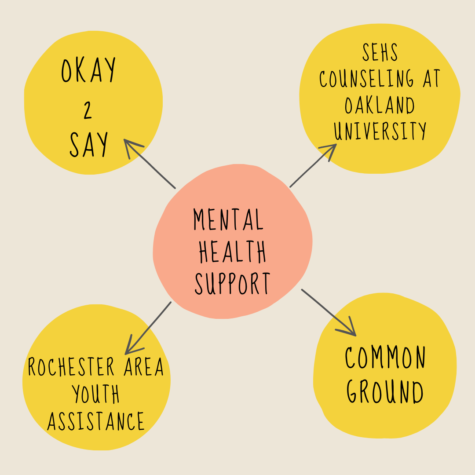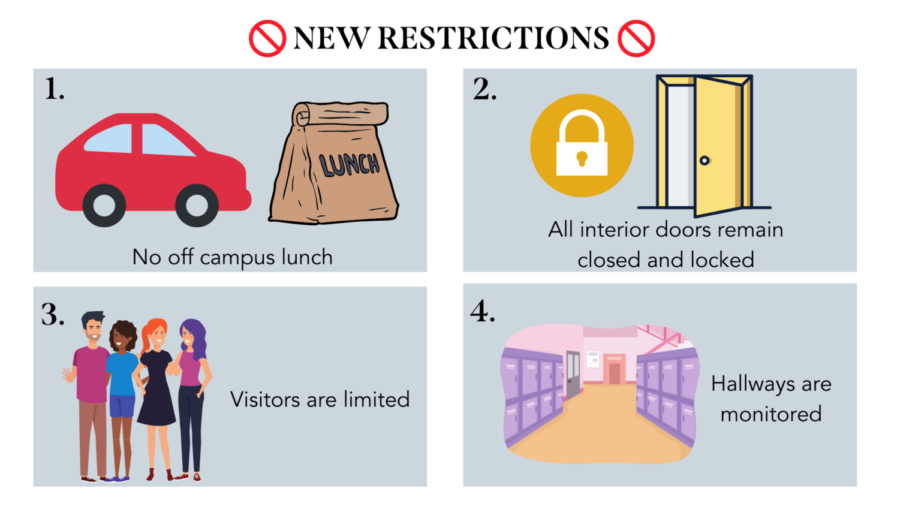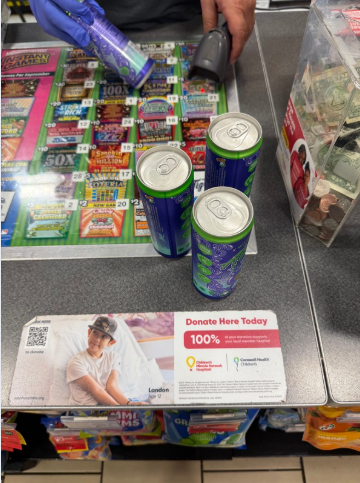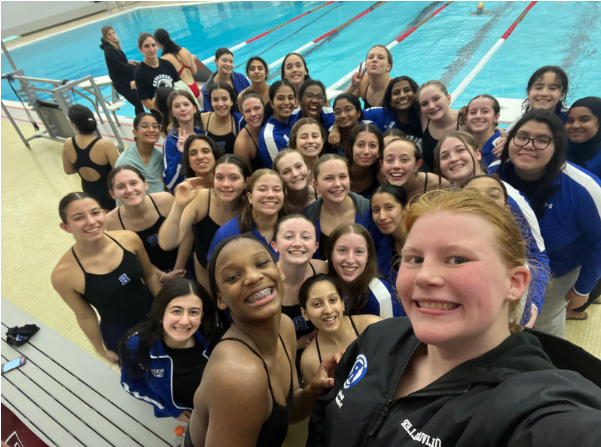Rochester High updates safety policies
January 28, 2022
In light of the tragic events at Oxford High School, Rochester High School has increased its safety measures and updated safety protocol. Recent adaptations to safety policies include restricting off-campus lunches to seniors, limiting visitors, increasing safety presence, and limiting the number of students in the halls during class time.
According to RHS administration, the school is committed to ensuring the safest and best possible learning environment for all students.
“I think the biggest thing that Oxford highlighted to neighboring communities is that unfortunately, these events can happen anywhere,” RHS Principal Mr. Joshua Wrinkle said. “It’s important to always be considering what safety protocols are and making sure they are up to date, and that people know what to do in those situations. I think one of the other things that came out of it was that people were really taking drills seriously and looking into how to report things, or how to help a friend in trouble.”
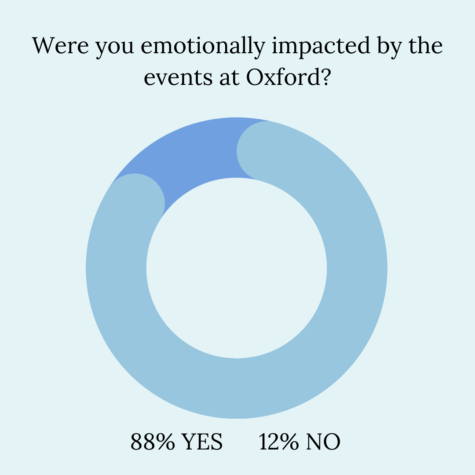
RHS has always had an increased safety presence within the school. Rochester is partnered with the organization “SafeEd” which provides professional security within schools.
“I did 27 years at Fraser Public Safety, where I was a police officer, a firefighter and paramedic,” SafeEd security officer Mr. Kieth Zilenski said. “I was the school liaison officer for Fraser High School for six years. I did a lot of specialized training. About half of us have some type of police or security background, and we’re all first-aid and CPR trained.”
Every year, each high school in the district is required to complete a certain number of drills covering all types of emergencies in order to assure students and staff know how to respond in a dangerous situation.
“The state requires that we do five fire drills, two tornado drills, and three lockdown drills,” Mr. Wrinkle said. “One of the lockdown drills has to be done at an alternative time, so that means passing time or lunchtime.”
Many local schools follow the protocol of an ALICE lockdown, which provides more safety measures than a traditional lockdown. (ALICE stands for Alert Lockdown Inform Counter Evacuate.)
“We teach and practice drill components of an ALICE lockdown,” Mr. Wrinkle said. “At Rochester, we may not call it an ALICE lockdown, but there’s a lot of similarities between that program and what we do.”
Safety protocols are reviewed each year by administration, which is followed by a meeting with the SafeEd staff on the new guidelines for the year.
“When we come to a school, we sit down with the principals who give us the procedures to follow,” Mr. Zilenski said. “But it’s a guide, it’s not a rule. We have to be flexible sometimes. You try to go with that plan, but in any situation when you have to deviate a little bit, then you deviate.”
When a school is placed in an immediate threat, there are many different factors that go into evaluating the safest way to protect students.
“What we always drill is locking down, barricading, and staying quiet,” Mr. Wrinkle said. “But if there’s a circumstance that allows a student or a group of students to exit to safety, we would never have an issue doing so. It is very dependent on the circumstance a person is in and ensuring that if they were going to evacuate somehow, it was done with 100 percent certainty that it is safe.”
In the instance of an emergency where students need to flee, many schools determine a specific meeting location where students should go to reconnect with peers and adults.
“If it’s in a situation where there’s an active, immediate threat, we just want students to get to safety,” Mr. Wrinkle said. “We are working to determine a consistent rallying point, and we have a lot of places right around us that would be willing to take any of you in during an emergency, including neighborhoods as well.”
For many, it’s scary to think about a life-threatening situation and how they would respond. Rochester High wants to reassure students that constant safety measures are taken daily to establish a safe environment.
“It’s hard to say don’t worry,” Mr. Zilenski said. “But if you see some of the things that we do, you would be reassured. Every couple of hours we are checking the doors. I actually go outside, put my coat on, and check on every exterior door to make sure it’s locked. We check every single interior door and we check the bathrooms. Paul is a retired police officer, I’m a retired police officer, and we’re trained to check for odd behavior.”
Many students, whether they knew a student at Oxford or not, felt very shaken and it was an awakening that tragedies can happen anywhere.
“Until the events at Oxford, I was not truly aware that the things we talked about and prepared for might be possible,” junior Samantha Tandy said. “Coming back to school after the Oxford incident was scary for me, and if I think about it now, it makes me slightly nervous to go to school. I feel safe at Rochester, but the thought that anything can happen gets to me sometimes. I trust the people and the staff at our school. But after something like this, it’s impossible to not be shaken up and worried sometimes.”
Having safety officers within the school reassures many students that they are in safe hands while at school. However, it must be noted that students must also play their part in contributing to school safety.
“If you are on social media and you see something that doesn’t seem right, you have to speak up,” said RHS counselor Mrs. O’Toole-Seyka. “You have the ability to be the voice and add a piece to school safety. It’s awful that you even have that responsibility, but you have the ability to speak, and that’s how we are empowered.”
There are resources available to students who notice something that does not seem right, one of which being Okay2Say.
“Okay2Say is an anonymous resource that students can use to connect with the state police in Michigan. They take what was submitted to them and give it to the correct people within the district,” Mr. Wrinkle said. “The nice thing about it is that it’s completely anonymous. We will never know who submitted the original request, but we know who we can help and try to support.”
For students who are in search of other kinds of support, including mental health resources, there are a variety of options within the Rochester community that are available.
“Okay2Say, Common Ground, and other community mental health resources are available,” Mrs. O’Toole-Seyka said. “There’s also Rochester Area Youth Assistance which is short-term counseling and it’s free. OAlso, Oakland University is almost done with their master’s program with counseling students, and they offer SEHS which is free, short-term counseling. As for simple tips, sleep, exercise, healthy foods, water, laughing, and being around people that care about you are all essential.”
The grieving process is different for every individual. It’s important to take time and do what’s necessary for healing.
“The events at Oxford were very emotionally draining for me,” Tandy said. “I did a lot of processing and journaling and talking with close friends. It made me think about things I never thought I’d have to think about. I’m still so incredibly disgusted, and saddened by everything that happened, and for the people we lost that were dear to us. Seeing everyone come together to support Oxford was a beautiful thing. And I’m eager to do more as a community to let the school know that we are here and we will support them.”
Dealing with a large, traumatic event such as the Oxford tragedy can be very confusing and emotionally difficult for everyone to grasp, especially students.
“Working in my counselor position as a helper, it was really heavy for a couple of weeks,” Mrs. O’Toole-Seyka said. “Not only did it have people questioning their sense of safety and having personal connections to Oxford in some way, but it also kind of resurfaced different traumas that people feel. Although it was really hard work, I enjoyed working with students who came to me and expressed their feelings in their own time frame. It’s the reason why we do what we do. Schedule changes and all of that are so minor when the deepness of our work is working with people.”
For those who feel like the trauma will never end, know that there are people who want to help and that sadness will not last forever.
“I’ve noticed over the years when we started talking about identifying mental health that many got a lot better at identifying it, but not necessarily working through it,” Mrs. O’Toole-Seyka said. “I think a lot of times people get stuck in the current situation and are not focusing on their way to be empowered. We will all have trauma in our life, all of us. Whether we’re experiencing it now, or experiencing it later, we will all experience trauma, but we are resilient human beings. It’s hard to really work through it, but we have the ability to grow with support. Sometimes we need professional advice when we don’t know what to do next. We have to be willing to get in that growth mindset that will allow us to change.”
